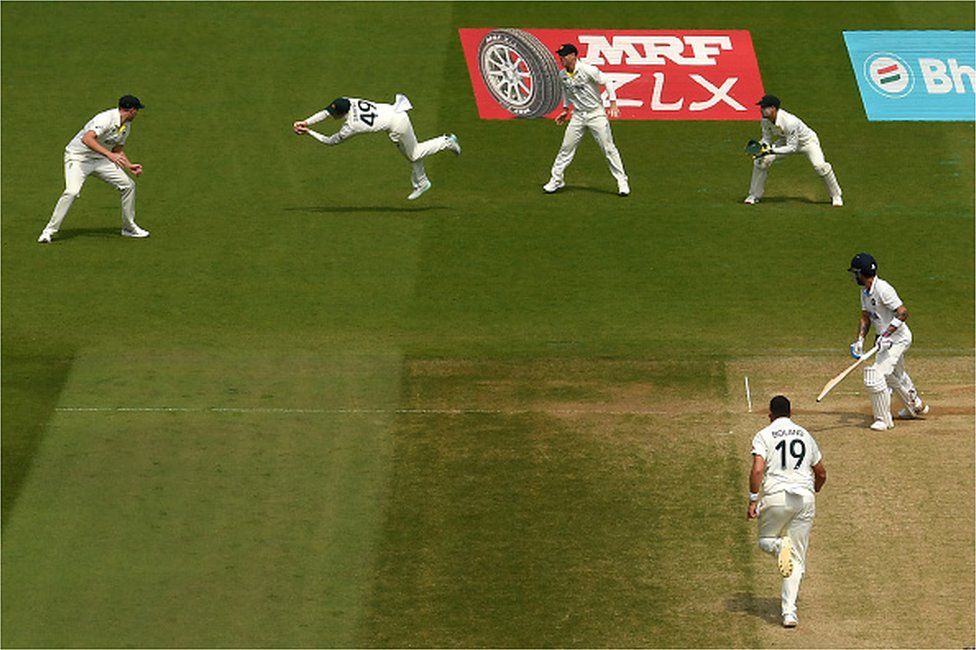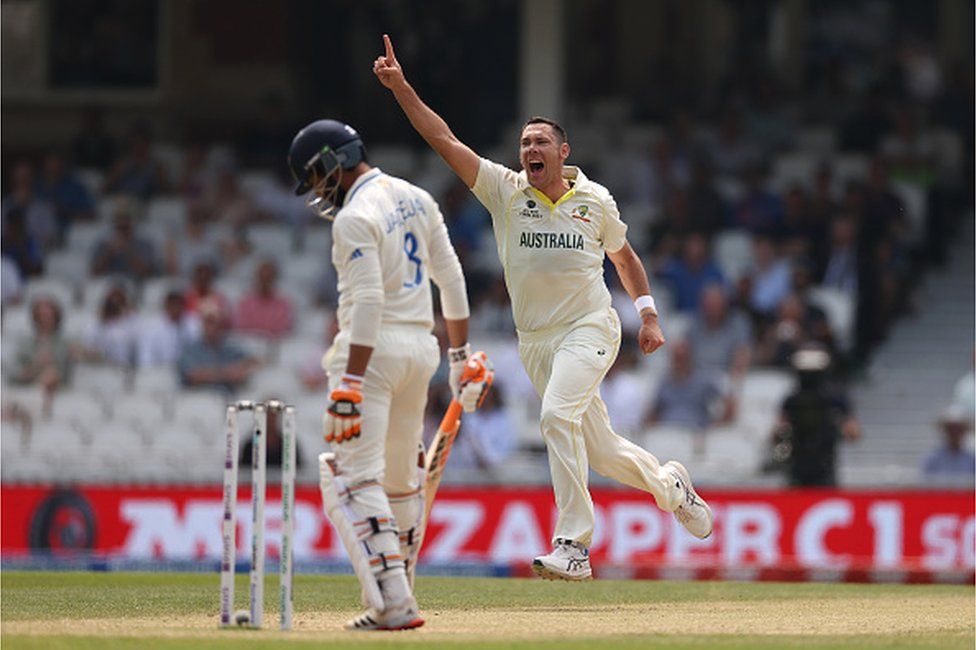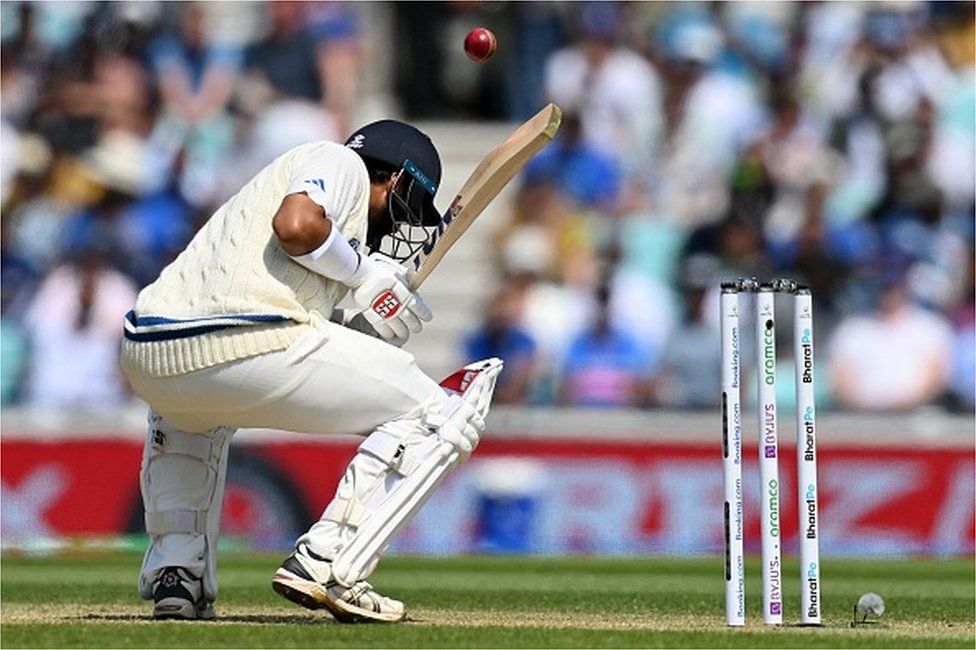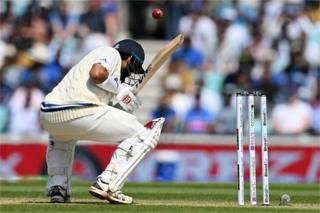
Finishing as the second best team in the world over four years and two cycles isn’t such a bad thing. By losing two successive finals of the World Test Championship, however, India have blotted their copybook somewhat.
It is possible that India lost the final on the opening day when they won the toss and asked Australia to bat first. Australia might have done the same – but they had better fast bowlers. Was that why India bowled first, so they wouldn’t have to face them first up? Was it a defensive move? It is one of cricket’s enduring cliches – attributed to players from WG Grace to Bishan Singh Bedi – that when you win the toss, bat. If you have to think about it, think for a bit and then bat.
Another of the game’s received wisdoms, the mantra of captains from Tiger Pataudi in the 1960s to Clive Lloyd in the 1980s is: play your best bowlers.
When the best bowlers in the West Indies were all fast bowlers, Lloyd played four of them; when India’s strength was spin, they played the spinners. It may have been lopsided, but including a token spinner in Lloyd’s team or a token medium pacer in Pataudi’s served no purpose. Thus even a wicketkeeper once opened India’s bowling as did star opening batter Sunil Gavaskar!
At a pinch, the choice at the Oval could have been between Jayadev Unadkat, whose left arm medium pace would have added variety and the great Ravichandran Ashwin, their most successful bowler in the two-year cycle. If claiming 474 Test wickets only entitles you to carry drinks to the field, Ashwin might begin to think he is in the wrong business.

India might still have been bowled out for 150 in the first innings and Ashwin might not have taken any wickets in the fourth, but at least it would show the team management’s thinking was sound.
For those who felt that the Rohit Sharma-Rahul Dravid combination of captain and coach might be too timid and the team required an aggressive duo at the top, the result was the same in 2021 with the more belligerent Virat Kohli-Ravi Shastri combo. India got the team selection against New Zealand wrong on that occasion and sought to make up this year, but two wrongs don’t make a right.
Having got the fundamentals wrong, India were playing catch up from day one at the Oval. Australia reserved their best for the best – Kohli got a beauty in the first innings from Mitchell Starc which he was good enough to nudge; in the second he was beaten by a Scott Boland beauty and fell to a blinder in the slips by Steve Smith.
India lacked that kind of fire. On the second morning, with Smith batting on his overnight 95, Mohammed Siraj presented him with two half volleys to virtually guide him to his century.
All kinds of excuses will be trotted out for India’s no-show: the IPL, the Duke’s cricket ball with which the match was played, the earliest Test at the Oval ever, the inconsistent bounce in the wicket, the fact that Jasprit Bumrah, Rishabh Pant and KL Rahul were missing from the team, but many of these applied to Australia too.

As has often happened in the recent past, a couple of good deliveries dismiss a couple of the top batsmen, a couple of poor strokes lead to more dismissals, and suddenly everyone is trying to work out how many first class fifties the No.8 batsman has scored.
Who would have expected Cheteshwar Pujara to let the wrong ball go and be bowled in the first innings or play the upper cut to the wrong ball and get caught behind in the second? And he is the only player not to have played the IPL! Ironically, India’s best batter in the contest, Ajinkya Rahane (89 and 46), doesn’t have a central contract!
Why do India consistently fall at the last or the penultimate hurdle in ICC tournaments?
Ten years is a long time to wait for a title – they last won the Champions Trophy limited overs in England in 2013. It is dangerous to seek a pattern here, for there cannot be one. White ball, red ball, tournaments at home, tournaments away, different captains and coaches, different times of the season – there are too many variables. Keep harping on it and the word chokers threatens to pop up. But India aren’t chokers.
They have won in England and Australia, in Sri Lanka and South Africa. They aren’t simply tigers at home and lambs abroad as they once were.
In the last 30 years, they have won significantly more away Tests than they have lost (124-80). The results of the last two World Test Championship finals cannot take away from that record.
Suresh Menon is an author and columnist

